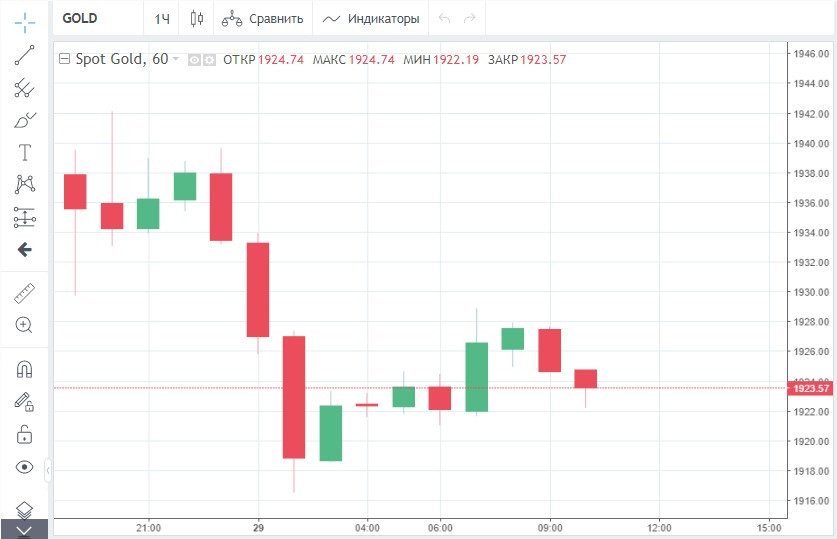
Peace talks between Russia and Ukraine will be the central event on Tuesday. Gold plummeted in the face of possible de-escalation of the conflict in Eastern Europe.
Last week, the precious metal soared by 1.3%, triggered by the escalation of tensions between the West and the Kremlin.
The United States and its allies introduced a new package of anti-Russian sanctions, thus increasing inflationary risks and boosting the safe-haven appetite.
This week, geopolitical developments will remain a hot topic among investors. Ahead of the next round of Russia-Ukraine peace talks in Turkey, tensions somewhat eased.
The Western media speculated yesterday that the Kremlin would not oppose Ukraine's decision to join the European Union if it gives up the idea of becoming a NATO member.
It was additionally reported that the new draft documents to be considered by the parties in Turkey allegedly no longer contain 3 initial demands of Russia such as denazification, demilitarization, and legal protection of the Russian language in Ukraine.
In the light of a possible breakthrough in peace talks, risk sentiment increased in the market.
Wall Street reported gains on Monday. The Dow Jones added 0.27%, the S&P 500 increased by 0.71%, and the NASDAQ Composite soared by 1.3%
Growing demand for stocks became a major contributor to the fall in gold yesterday. The bullion tumbled by 0.7%, or $14.40, settling at $1 939,80 at the close of the trading day.

This marked the second consecutive decline in the price of the precious metal. In addition to the geopolitical factor, macroeconomics is also weighing on the gold market.
On Monday, the US dollar index strengthened by 0.3% versus its main counterparts. The greenback is firm above 99.00 ahead of a possible 50 basis points rate hike by the Federal Reserve in May.
To tame galloping inflation, the regulator has no other option but to hake rates and reduce the inflow of liquidity into the American economy.
The US dollar is expected to be bullish this week, boosted by the strong NonFram Payrolls report, which is to be published on Friday. The figure is expected to soar in March, following two consecutive increases in January and February.
Gold to get weaker?
"The dollar has generally been the primary safe haven in recent weeks, but interest in gold, while perhaps somewhat subdued, is still relatively solid. Investor sentiment has remained positive in the face of continued geopolitical risk," Rhona O'Connell, head of market analysis, EMEA & Asia, at StoneX, said in a note Monday.
Meanwhile, there are those not expecting any breakthrough in peace talks between Moscow and Kyiv today. In particular, Russian and Ukrainian officials doubt this round of talks will be efficacious and will cease fire.
"This positivity that an end can be found to the bloodshed in Ukraine has reduced gold's appeal as a haven asset," Rupert Rowling, market analyst at Kinesis Money said.
Gold is likely to stay in the range between $1,900 and $2,000 in the short term amid the ongoing crisis in Eastern Europe even despite the hawkish Federal Reserve, the expert assumed.





















